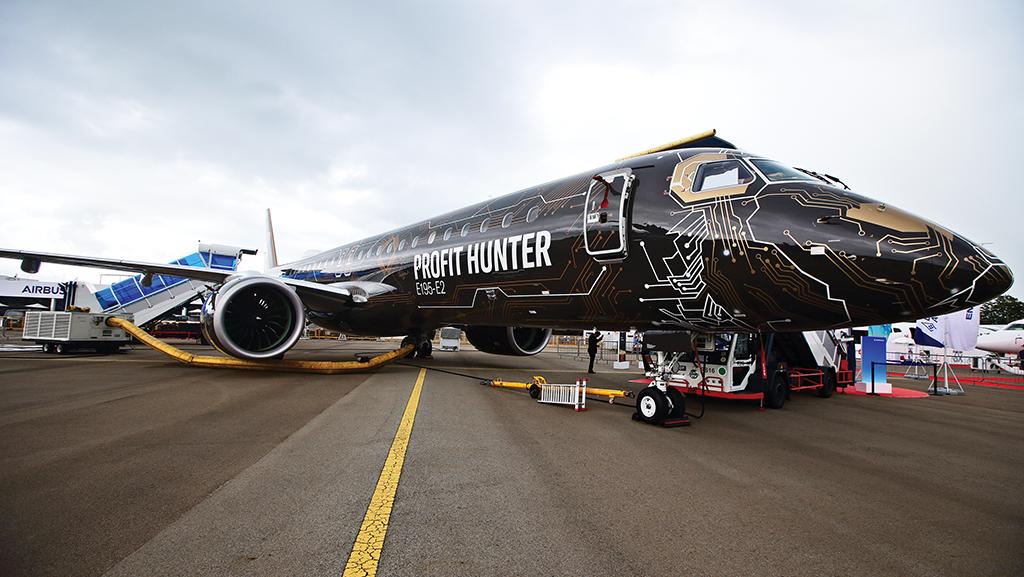Chinese E195-E2 Certification May Herald More Good News For Embraer

Embraer is confident that its aircraft have a strong future in both China and India.
Certification of an aircraft type in another country is normally a minor issue, albeit a prerequisite for starting operations abroad. In the case of Embraer’s 195-E2 and China, the recent decision by the Civil Aviation Administration of China to approve the type is much more significant, heralding Embraer’s strategic shift to Asia.
The Brazilian aircraft manufacturer, like its larger peers Airbus and Boeing, is still recovering from the COVID-19 pandemic and is far from production levels it once enjoyed. In addition to the issues every OEM faces, Embraer has to deal with problems specific to regional aviation and its own product portfolio. The E2 family, a fundamental update of Embraer’s first-generation large regional jets, is not selling as well as the company had hoped in its usual Western markets.
- Final assembly lines are possible in both China and India
- E195-E2 Certification in China is next step ahead of orders
The reasons are manifold. Scope clauses in pilot contracts in the U.S. persist, preventing new orders. The in-service regional fleets are also relatively young, and low-cost carriers operating larger aircraft have entered many formerly regional routes in Europe. This means Embraer needs new ideas and new markets to brighten its prospects.
That is where China and India come into play. If all goes as planned by Embraer CEO Francisco Gomes Neto, the two countries will become major growth markets for its aircraft as well as new partners in production. Gomes Neto has said he is prepared to set up final assembly lines in China and/or India, provided the necessary number of orders are secured. Companies in both could also become large suppliers in addition to performing assembly work. More hints about Embraer’s future in the region could emerge as soon as at the next G20 summit, hosted by India and starting Sept. 9.
In China, aircraft type certification can be viewed not just as an administrative act following an analysis of the type’s airworthiness and safety, but also as part of a larger industrial strategy. The government clearly thinks the E2 will be useful in Chinese civil aviation. Moreover, both the E190-E2—certified at the time of the 2022 Zhuhai Airshow—and the E195-E2 are larger than the Comac ARJ21 and smaller than the C919, so they will not compete with those locally made products.
“Our team in China is actively working with potential customers and making good progress,” Embraer Commercial Aviation President and CEO Arjan Meijer says. “There are significant opportunities for the E2 in China, which offers complementary capacity to China’s indigenous ARJ21 and C919 aircraft. Combined, they provide flexible, efficient and eco-friendly options for Chinese airlines, meeting the demand of the world’s fastest-growing air transportation market,” he adds.
During Brazilian President Luiz Inacio Lula da Silva’s state visit to China in April, both governments expressed support for Embraer’s activities and potential aircraft sales in China.
At the Paris Air Show in June, Embraer signed a letter of agreement with Lanzhou Aviation Industry Development Group for 20 E190Fs and E195F E-Jet passenger-to-freighter conversions, with the industrial capability to be established in Lanzhou, the Gansu province capital.
It is not clear where final assembly of the E2s will take place, and Embraer is not commenting on the number of orders it would need to justify building a facility with a local partner. Under an earlier partnership with Avic, ERJ145s and Legacy 650 business jets were assembled in Harbin from 2003 to 2017. That venture was not successful, with only 45 aircraft built.
Aviation Week Network’s Fleet Discovery database indicates 62 older E-Jet variants are in service in China, 43 of the smaller E190 and 19 of the longer E195. Another 10 E-Jets are parked, and 26 are stored.
The E2 has been gaining traction in the Asia-Pacific region. Embraer secured an order from Singapore’s Scoot for nine E190-E2s and from Malaysia’s SKS Airways for 10 E195-E2s.
Historically, Chinese operators have had as many as 85 E190s (as of 2017) and 20 E195s (as of 2018) in service, along with 38 MHIRJ (formerly Bombardier) CRJ900s (as of 2018) and 14 CRJ700s (as of 2017), according to Aviation Week Network fleet data. China has a record 238 regional jets in service now, partly as a result of higher ARJ21 output.
Embraer’s big push in Asia is not limited to China. The manufacturer is making a large marketing effort in India, where it hopes to sell the C-390 military transport and more commercial aircraft, as well as enter industrial partnerships. But conditions are different in India, where Embraer is dealing with private airlines and less direct government intervention. Industrial offsets for large orders are still expected, as Airbus and Boeing recently noted when they signed aircraft deals with Air India, now a privatized entity.
Given India’s less controversial geopolitical situation, potential Embraer exports from there to other Asian countries would presumably be easier to arrange than from a base in China. However, India is a small market for Embraer. Its only customer there, regional carrier Star Air, operates three Embraer 175s and four ERJ145s.

